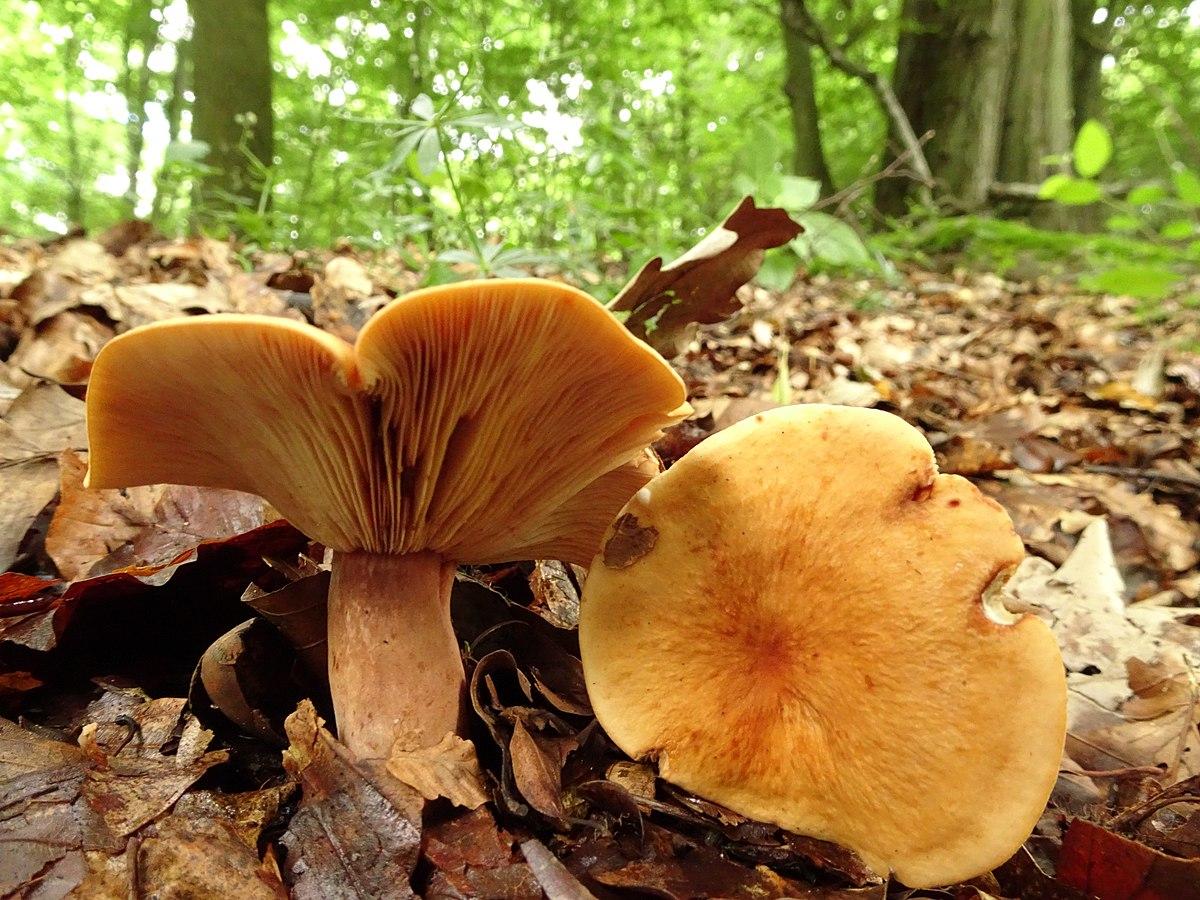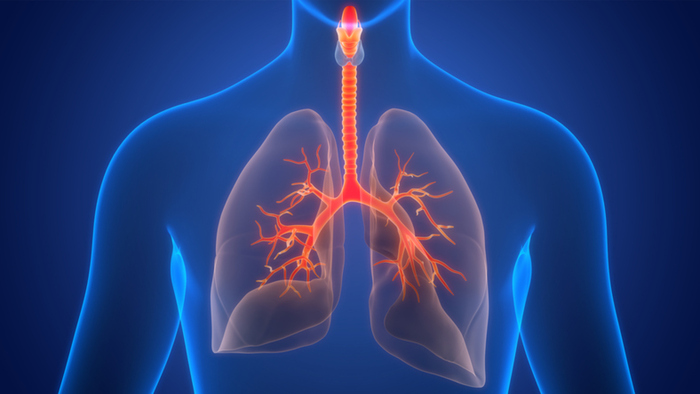Today, nearly 7,500 people are affected by cystic fibrosis, one of the most common rare diseases in France and whose life expectancy is between 40 and 50 years.
This disease is caused by a mutation in a gene called CFTR, coding for a protein of the same name.
The dysfunction of this protein is responsible for thickening of the mucus, particularly in the lungs, but also in the pancreas and liver.
The disease causes significant respiratory and digestive difficulties.
” READ ALSO –
Kaftrio, this drug with spectacular effects against cystic fibrosis
If 80 to 85% of patients can currently benefit from treatments,
15 to 20
% of patients are not eligible
.
For good reason, at least half of these patients (10%) carry a particular mutation which completely blocks the production of the CFTR protein.
A major challenge for scientists is therefore to find a drug capable of correcting the effects of these mutations and thus offering these people invaluable months of extra life.
After several years of research, the team of Fabrice Lejeune, researcher at Inserm, discovered a molecule which could be of major interest for these patients in the therapeutic impasse.
"
Results that are encouraging to say the least
", judge Pierre-Régis Burgel, pulmonologist at the
More than
2100 mutations of the CFTR gene
have been identified and associated with cystic fibrosis.
The most frequent, the delta-F508 mutation, causes a malformation and therefore a dysfunction of the CFTR protein, an ion transport channel which ensures the fluidification of the mucus.
"
The new treatments available, such as Kaftrio, make it possible to correct the bad folding of the molecule and to reactivate its function, thus reducing the symptoms
", indicates Pierre-Régis Burgel.
But 10% of patients do not respond to any of the treatments because they do not produce the CFTR protein at all.
"
These patients carry two nonsense mutations in each of the two copies of the CFTR gene, one transmitted by the father, the other by the mother.
These mutations prevent the production of the corresponding protein
”, continues the doctor.
A single molecule retained among 20,000 tested
Faced with the challenge of finding a treatment, Fabrice Lejeune's team may have found a molecule capable of effectively correcting nonsense mutations.
It took researchers several years to isolate this famous molecule from among the 20,000 extracts kept at the National Chemical Library.
“
We tested these 20,000
extracts one by one.
Only one of them, which came from the National Museum of Natural History (MNHN) in Paris, contained a molecule with an activity of effective correction of nonsense mutations.
From 2012, a collaboration with the MNHN began to identify the active principle of this extract
”, says Fabrice Lejeune.
If many teams have already brought molecules to the first phases of clinical trials, they have for the moment seen their hopes dashed because of effects deemed too modest, not allowing the trials to continue.
This was notably the case for the avalure and the ELX-02.
The molecule identified by Fabrice Lejeune's team may have been under our eyes for a long time, somewhere on our plates... Indeed, this molecule called DAP (for 2,6 diaminopurine) was isolated from a edible mushroom, the inverted Clitocybe (
Lepista flaccida
).
Once the molecule was identified, the scientists rushed to test its effects in four experimental models of cystic fibrosis.
Among these models were mice with the disease, developed in the laboratory;
cell lines carrying nonsense mutations;
patient cells obtained by nasal brushing and patient-derived organoids mimicking an intestinal environment.
The use of these models is a first and "
has made it possible to study the possible therapeutic benefits of DAP by reproducing the different conditions that are closest to what is happening in the body of patients
", underlines Brice Marcet, CNRS researcher at the IPMC.
” READ ALSO –
A great hope against cystic fibrosis
A promising therapeutic avenue
The results suggest that DAP effectively corrects the nonsense mutation, makes it possible to restore the expression of the mutated gene in the models tested, but also to produce a complete and functional CFTR protein.
The benefit was twofold for the treated mice: reduction of symptoms and extension of their life expectancy compared to sick mice that had not received DAP.
A molecule that tricks protein production
But then, how does DAP work?
In all cells of the body, a machinery composed of ribosomes and transfer RNA (tRNA) is responsible for "
reading
" and translating the information coded in the genes in the form of a sequence of nucleotides.
tRNAs associate each triplet of nucleotides (a “
codon
”) with a unique amino acid, the sequence of which results in the manufacture of a protein.
"
DAP has the particularity of inducing a transreading mechanism which makes the organism ignore the presence of a nonsense mutation on the CFTR gene.
In other words, DAP forces tRNAs to make a reading error: when they reach a premature stop codon, they should interrupt the production of the CFTR protein, but in the presence of DAP, they continue to incorporate amino acids as if there were no stop codon, which makes it possible to complete the synthesis of the CFTR protein
”, explains Brice Marcet, researcher at the CNRS and the IPMC.
The authors of the study have also shown that DAP is distributed efficiently in many tissues (muscular, pulmonary, cerebral and intestinal).
"
This is a particularly important characteristic that we had to test since, contrary to popular belief, the lung tissue is not the only one affected by cystic fibrosis
", specifies Fabrice Lejeune.
This suggests that a possible drug containing this molecule could reach all the tissues affected by the genetic disease, or even, since the molecule also crosses the blood-brain barrier, correct certain neurological diseases, also linked to nonsense mutations.
This is the case, for example, of Duchenne myopathy, a neuromuscular disease.
DAP will have to go through two mandatory steps before being offered to volunteer patients as part of a clinical trial.
"
It is a question on the one hand of carrying out the regulatory toxicity tests to ensure the harmlessness of the DAP and on the other hand finding the best formulation, that is to say determining the ideal concentration of the DAP that each tablet should contain as well as the dosage
", explains Brice Marcet.
We will therefore have to wait a few more years before knowing whether DAP will become the active ingredient of a new drug against cystic fibrosis.








/cloudfront-eu-central-1.images.arcpublishing.com/prisa/2CTJ5HLPXBE4NGSHP6SCZIQ4IM.jpg)

/cloudfront-eu-central-1.images.arcpublishing.com/prisa/2C5HI6YHNFHDLJSBNWHOIAS2AE.jpeg)




